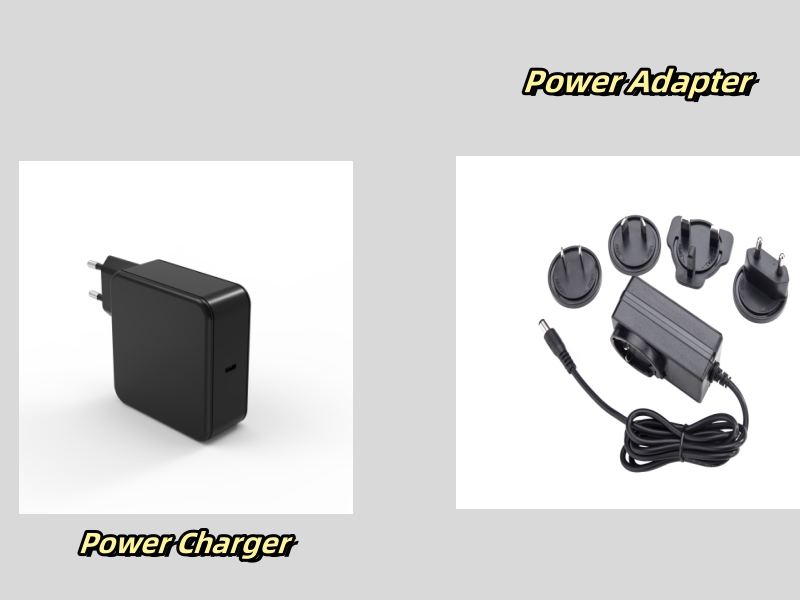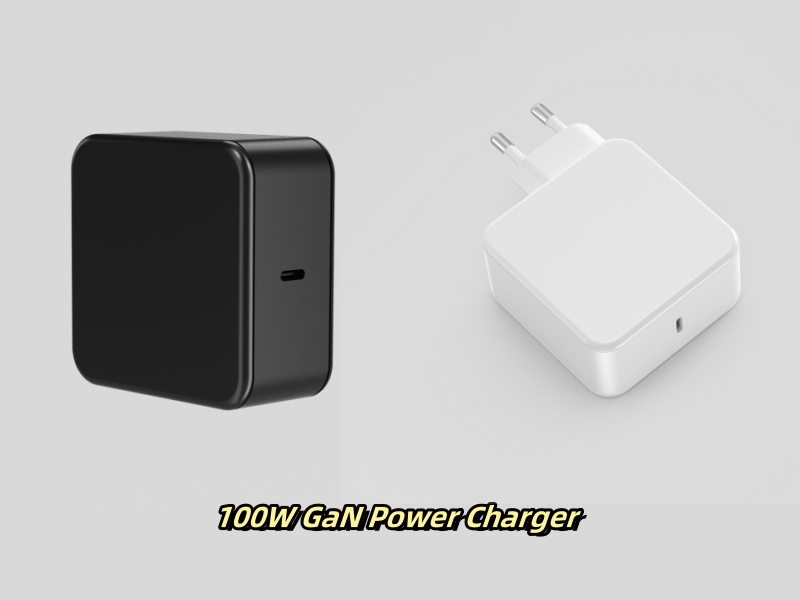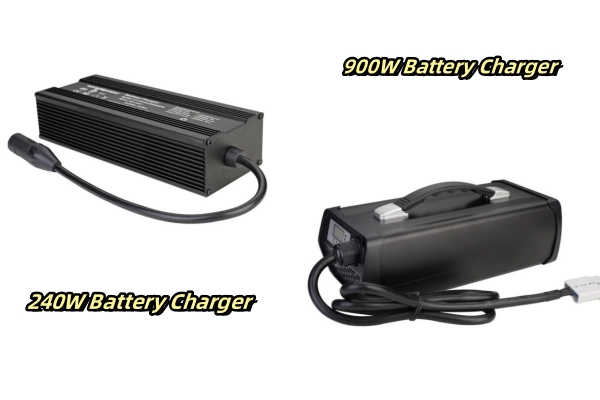Many of us have had similar experiences: when our phone's battery runs low, we grab a cord and say to those around us, 'Could you lend me your charger?' Or, when we need to power our laptops, portable WiFi devices, or even desk lamps, we still habitually refer to charging devices with that power cord as' chargers'.
In our daily lives, the term "charger" has almost become a general term for all power supply devices that can provide electricity to electronic devices. We rarely distinguish whether this wire is directly supplying power to the device or intelligently charging the device's built-in battery. This mixed use phenomenon is so common in our daily life or work that we overlook an important technical detail behind it: power adapters and chargers have essential differences in function and principle. What are the differences between them? Please let us explain them in detail.

What is the Power Adapter?
A power adapter is a power conversion device for small portable electronic devices and electronic appliances. Typically, there is no space inside the casing of such devices to accommodate the bulky components required for this conversion. A replaceable external power supply unit provides greater flexibility They have an external power supply and connect it to the host with a wire, which can reduce the size and weight of the device. Only a very small number of devices and appliances have the power supply built into the host. The most basic function of a power adapter is AC/DC conversion, which is composed of a power transformer and a rectifier circuit inside. It itself does not include complex battery management functions, it is just a stable power supply source. Typically, power adapters are suitable for devices that do not require batteries, such as computer monitors and routers.
What is the Power Charger?
A "Power charger" (or "battery charger") is a power source that converts AC power from a wall into DC power. A charger is a DC power source specifically designed for charging batteries, containing control circuits such as current and voltage limits to replenish energy to rechargeable batteries at appropriate voltage and current levels, thereby efficiently and safely charging the batteries.
As we mentioned earlier, most modern portable devices nowadays usually have built-in battery charging function, and power adapters can meet their charging needs very well. However, in our daily lives, external battery chargers are still very necessary, and many charging scenarios cannot do without them. Larger electronic devices (such as electric vehicles), external batteries such as power banks, and many other devices such as power tools, cameras, and portable gaming devices can be charged using external chargers. The charger is equipped with an intelligent management circuit that can control charging parameters more strictly based on battery level, temperature, and other conditions, dynamically adjust voltage and current, and implement protective measures to prevent overcharging and overheating of the battery.

Who needs an adapter and who needs a charger?
Typical applications of power adapters from the perspective of consumers:
Think about your home router or desktop monitor. They usually do not have built-in batteries and require continuous power supply to function. The function of the 'black box' you are connecting is to convert the 110V or 220V AC power on the wall into low-voltage DC power that can be safely used by the equipment. In this case, this' black box 'is a pure power adapter. If it is damaged, your device will be completely inoperable.
Typical applications of chargers:
The most common example is the power adapter we use to charge smartphones or laptops. Although we habitually call it a 'charger', strictly speaking, it is usually just a power adapter because it is only responsible for providing stable DC power. The real charger is the charging management circuit inside the phone or laptop. This internal circuit is responsible for monitoring battery level, temperature, and voltage, and then charging the battery in the best way possible. Another classic scenario is the external battery charging dock designed specifically for AA/AAA rechargeable batteries, which itself includes complete charging management functions, making it a true charger.

Typical applications of power adapters from a B2B and industrial perspective:
In industrial environments, devices such as security monitoring, network switches, and LED lighting systems require long-term and uninterrupted stable operation. The main function of the power supply unit (PSU) that powers them is to perform AC/DC conversion and provide stable and reliable power to the equipment. These power units are like "industrial grade power adapters", and their stability and efficiency directly affect the normal operation of the entire system.
Typical applications of chargers:
Equipment that supplies power to electric forklifts or automated mobile robots in warehousing and logistics centers, or to food delivery robots in the catering industry, is a typical charger. These charging devices not only need to provide powerful power, but also must have complex battery management systems. They will intelligently adjust the charging curve based on the power and health status of the large battery pack to ensure the safety of the battery and extend its service life. Portable medical device charging stations in the medical industry also require specialized chargers to ensure accurate power supply to the devices and the health of the batteries.
Future Trend Insights: When GaN, USB-C, and Wireless Technologies Blurry the Boundaries
With the rapid development of technology, the traditional boundary between power adapters and chargers is being broken by emerging technologies, and a more universal, efficient, and convenient power supply future is taking shape.
Universal standard: Integration of USB-C and Power Delivery (PD)
For a long time in the past, every device had its own unique power interface and adapter, which not only caused huge resource waste and environmental pressure, but also brought many inconveniences to users. With the advancement of technology, USB-C is becoming a unified universal interface standard. Combined with the Power Delivery (PD) protocol, a USB-C interface is no longer limited to data transmission. It can intelligently negotiate and provide multiple voltages and currents from low power to high power, meeting the power supply and charging needs of various devices. In this mode, a power supply device can play the roles of both a "power adapter" and a "charger" simultaneously.
Material Revolution: miniaturization and efficiency brought by gallium nitride (GaN)
Traditional power bricks are always large and heavy because they require silicon-based semiconductors and huge heat sinks to handle heat generation issues. The emergence of gallium nitride (GaN) technology has greatly changed this situation. As a new type of semiconductor material, GaN has higher efficiency and stronger conductivity, which means it can handle higher power in a smaller volume and generate less heat. This enables the design of power adapters and chargers to achieve unprecedented power density. Nowadays, we can see more and more GaN fast charging products, which are compact in size and easy to carry, but can provide powerful power output, providing a solid foundation for the portability of electronic devices.
Invisible Convenience: The Future of Wireless Charging and Resonance Charging
In addition to the innovation of wired technology, the development of wireless charging technology is also changing our electricity habits. From Qi standard wireless charging pads for smartphones to future medium power resonance charging technologies, we are gradually breaking away from our dependence on physical connections. The future wireless charging technology will not be limited to close range contact charging, but is expected to achieve isolated power supply, providing seamless energy supplementation for smart homes and industrial Internet of Things (IoT) devices, making the power supply of electronic devices more free and flexible.
The core difference between power adapters and chargers is that if it include an intelligent battery management circuit? If it has a battery management system, it is a charger. And if it does not, it is a power adapter. It is recommended that consumers not only pay attention to the interface when purchasing power products, but also understand the device's needs, so that their purchasing behavior can make the most accurate choice. By choosing AiecoPower, you will collaborate with leaders in the field of power technology to ensure that your operations run smoothly and efficiently through top tier power solutions.








